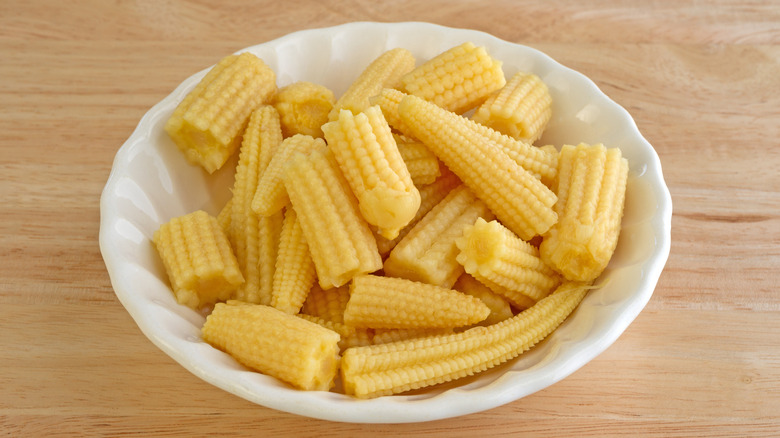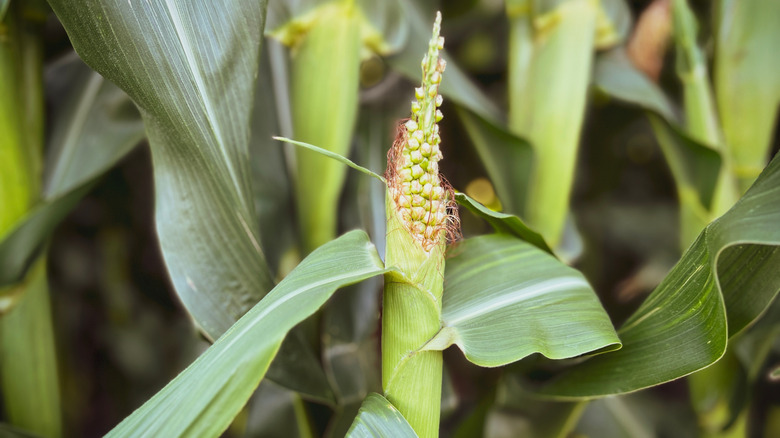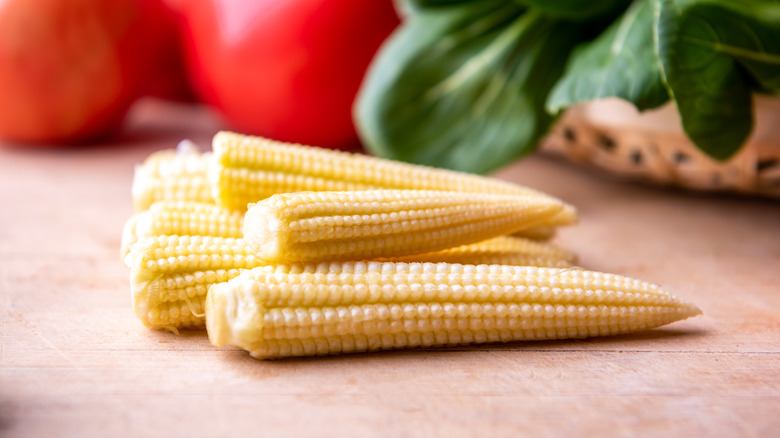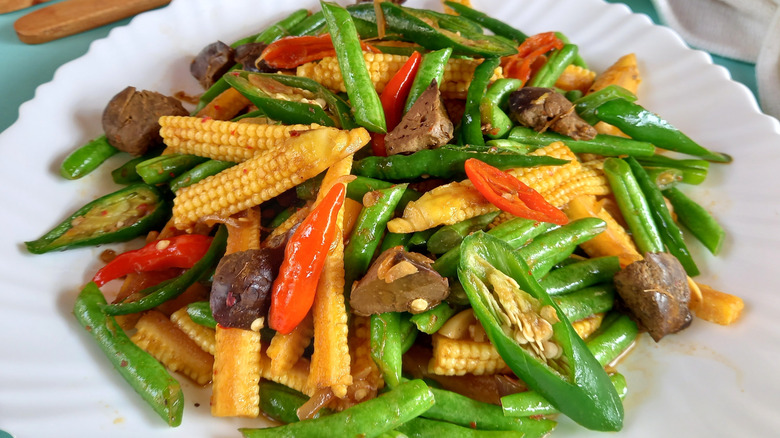What's Baby Corn And How Is It Different From Regular Corn?
You've seen plenty of them, those little yellow spears studding your takeout stir-fry. They look exactly like diminutive cobs of corn, except they're soft, with kernels that don't detach from the cob, and you can eat them in their entirety, core and all. No dainty nibbling necessary.
Growing up, I simply assumed that it was colloquially known as baby corn because of the way it resembled the regular full-sized kind. Certain things about it, after all, are off: these little ones are a little bit skinnier and pointier than the thick cylinders of summer sweet corn you can buy by the ear at the grocery store or farmer's market. So what is baby corn, really? Turns out I had spent a lifetime overthinking it. Baby corn really is just... baby corn. Nothing more complicated than that.
How baby corn is harvested
It's funny thinking that my little self must have been a bit of a doubter, because this isn't some alternative cousin to corn that's taken on its name for the sake of simplicity. It's the same corn we enjoy at peak season every summer, harvested in its immature stages while it's still tiny.
Because corn matures quickly, the tiny kernels are plucked as soon as thread silk appears from the tips of its husks, and the cobs at this young stage have yet to develop any of that trademark corn flavor we know and love. That means all baby corn pretty much tastes about the same — that is to say, bland — no matter which variety of corn it is.
Why fresh baby corn is hard to find
Because of its lack of flavor and diminutive size, baby corn is not exactly a profitable crop, at least compared to its fully mature counterpart. It makes sense: Why bother harvesting a tiny crop when waiting it out a bit will net you a much bigger and more lucrative one? Typical harvesting machines aren't even equipped to grab baby corn off the stalks, so they need to be gathered by hand. Labor-intensive, unprofitable, relatively unuseful — you can see why most farmers in the United States don't even bother with it.
Most baby corn you'll see is grown elsewhere, mainly in Thailand, where farms are dedicated to the specialty crop. And considering the distance between Thailand and the United States, as well as how delicate a product like baby corn can be (it is an actual baby, after all), it's typically sold here as a canned product rather than a fresh one, treated with preservatives, salt, and maybe sugar.
How to use baby corn
Baby corn is extremely easy to use — just pop that can open. Since it doesn't have a ton of flavor on its own, you can toss it into practically anything, not just a stir-fry. Slip it into salads, soups, or stews for a little extra chew. If you're feeling frisky, you can even drain the liquid out of the can and dump them onto a snacking tray to eat like crudités. Or, if you're me, you can just eat some straight out of the can. They might not taste like much, but neither does celery, and that can be fun to snack on.
Every now and then I'll challenge myself to nibble just the kernels off a piece of baby corn to feel like a giant, then polish off the remaining core in one bite. My kid self was a doubter of baby corn's provenance, but my adult still honors that kid by eating baby corn as he would.



